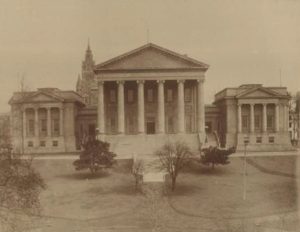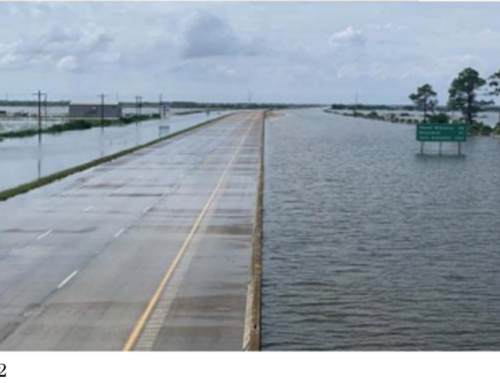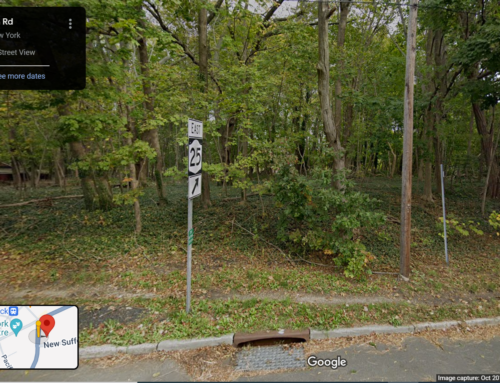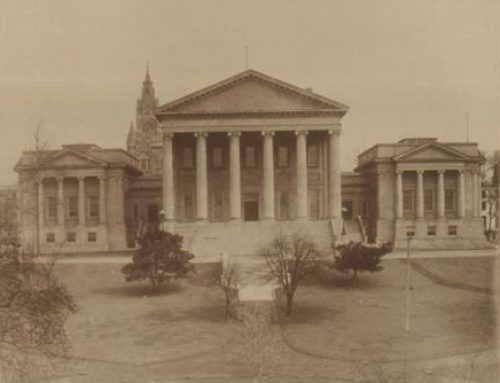
The Virginia General Assembly has now adjourned its regular session, and both bills that were previously described on this blog have survived, though in modified form. The changes to Senate Bill 666, previously discussed here, and Senate Bill 694, previously discussed here, will be discussed in more detail below.
Senate Bill 666
The primary modification to the bill is the removal of the provisions regarding lost access, though, as discussed below, similar provisions have now been added to Senate Bill 694. This bill now exclusively pertains to lost profits.
The bill still expands the concept of lost profits by defining it to include the loss of “expected profits” suffered by a business. However, the consequences of this change are somewhat tempered by the requirement that the owner prove “with reasonable certainty” the amount of the lost profits and that the loss is directly and proximately caused by the project. The law also requires that the loss be determined in accordance with generally accepted accounting principles.
The bill also eliminates the requirement that the person making claim for lost profits be the owner of the property or a tenant entitled to exclusive possession of the property taken, which will expand liability in cases where common areas of a multi-tenant property are taken.
The amended version of the bill restores various conditions that the owner’s claim must meet, including the requirements that the loss cannot be reasonably prevented by relocation or taking steps that a reasonably prudent person would take and that the loss will not be duplicated in other forms of compensation.
Procedurally, the bill changes the provision related to bifurcation of the claim for lost profits from other claims at trial. Under previous law, the claims could be bifurcated if the three-year lost claims period would not expire for more than a year after the date of filing of the petition for condemnation. The bill changes that provision to eliminate the timing aspect and provide that the bifurcation may only be requested by the owner of the business or farm operation making the claim.
Finally, the bill provides that the law is not intended to provide compensation for inverse condemnation claims for temporary interference or interruption of a business where no property is taken and where the impact is for fewer than seven days. This addresses concerns that the bill would create liability for temporary road closures for things like parades and marathons. However, it could still open the door for some claims stemming from longer interruptions that last for more than seven days. This will mean that a city weighing a longer-term event, like the UCI Road World Championship bicycle races that were held in Richmond over a course of nine days in 2015, will need to consider the possibility of inverse condemnation claims for lost profits stemming from road closures for such events before agreeing to host them.
Senate Bill 694
After passing the Senate, Senate bill 694 was amended in the House of Delegates to add in provisions relating to lost access that are similar to the provisions that were removed from Senate Bill 666. The Senate initially rejected the House amendments, which resulted in the bill being sent to a conference committee. The final bill that passed both houses largely mirrors the House version.
The bill now amends the definition of lost access by removing the requirement that it be a material impairment of direct access. Now, lost access is defined as a “change of vehicular or pedestrian access to property that is caused by a public use project for which the eminent domain power has been exercised against the property and which results in a diminution in the value of the property.” The bill also changes the provision governing the award of compensation for lost access to remove the prohibition on recovery for injuries that are suffered in common with the general community, such as off-site circuity of travel. The bill also contains a similar provision to Senate Bill 666 related to temporary takings, which provides that nothing in the law is intended to provide for inverse condemnation liability for lost profits or lost access for interruptions that last for fewer than seven days. However, the provision in Senate Bill 666 only applies where no property is taken; the provision in Senate Bill 694 contains no similar restriction.
As previously discussed in the original blog post about Senate Bill 666, these provisions expand liability for lost access. For example, under existing law, the owner of a parcel from which a small strip is taken for a project that involves widening a road to add a median that will turn an existing full-service entrance into a right-in, right-out entrance could not bring a claim for lost access resulting from the addition of the median. Any such claim could be dismissed as a matter of law because the alleged harm stems from off-site circuity of travel for left turn traffic that is suffered by the public generally. Under the bill, the claim likely could not be dismissed as a matter of law and may very well result in an award, assuming the landowner’s expert opines that the resulting circuity of travel lowers the value of the property.
As previously noted, the bill also contains provisions related to temporary easements. The original version of the bill required all condemning authorities to specify the calendar date on which temporary easements in a certificate would expire and did not include any information about what would happen if delays caused the project to extend beyond that date. The amended bill fixes that issue for all condemning authorities except for VDOT. The general provision governing the certificate process provides that any certificate that includes a temporary easement shall include the date on which the easement shall expire only if that date is known to the condemning authority. If it is not, the condemning authority must certify that the date is not known and, once the date is known, file a certification of the expiration date in the same manner that the certificate is filed and provide a copy to the landowner or the owner’s counsel. Practically speaking, this will likely mean that most condemning authorities will certify that the date of termination is unknown and will only certify the date once the work on the property at issue is nearly finished.
Unfortunately, that change was only made to the amended § 25.1-307, which is the provision governing the contents of certificates generally. Section 33.2-1022, which is the provision that governs VDOT’s use of certificates for highway purposes, still requires that the certificate set forth the calendar date on which any temporary easement expires and makes no provision for uncertainty. It seems likely that this is an oversight on the part of the conference committee.
Both bills have now passed both houses of the legislature and will be considered by the governor, who will have the option of signing, vetoing, or recommending amendments to them. If either of the latter options is exercised, the bills will be considered again at the legislature’s veto session later this year.
Matt Hull is a Pender & Coward attorney focusing his practice on eminent domain/right of way, local government, and waterfront law matters.
Disclaimer
The materials on this web site have been prepared by Pender & Coward, P.C., for informational purposes only and are not legal advice. This information is not intended to create, and receipt of it does not constitute, a lawyer-client relationship. Internet subscribers and online readers should not act upon this information without seeking professional counsel. Do not send us information until you speak with one of our lawyers and get authorization to send that information to us. Information sent without prior authorization may not be protected as a privileged and confidential attorney-client communication.







Leave A Comment